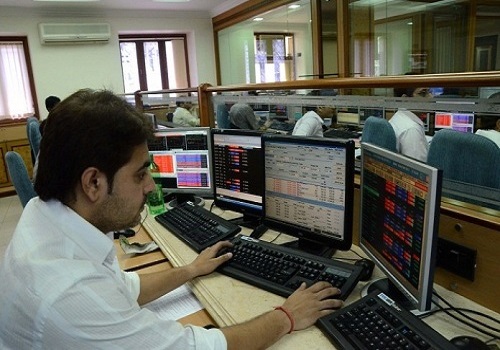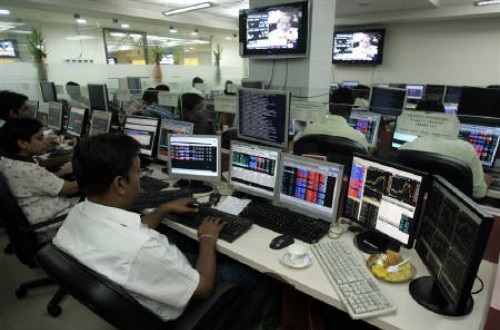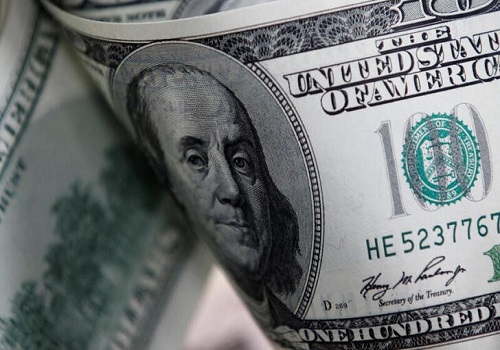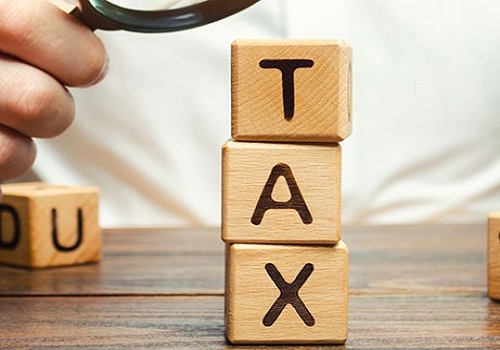Expert Speak on Auto Sector by Motilal Oswal Financial Services Ltd

Assessing Impact of US tariffs on Indian auto component market
The Indian auto industry is facing US tariffs in three ways: 1) 25% tariffs announced on 10th Feb’25 on steel and aluminum derivatives; 2) 25% tariffs imposed on the auto industry under Section 232 of the US Trade Expansion Act; 3) region-wise reciprocal tariffs to be levied on parts not included in the above two scenarios, with India falling in the 26% category. However, given the detrimental impact of these tariffs on its own industry, the US government has recently indicated its intent to provide some relief for the auto industry. While most regions are looking to work out a trade agreement with the US, China seems to have entered into a trade war with the US. This may prove to be a silver lining for emerging markets like India. Though a complete shift away from China may not happen, low-cost regions like India are seeing a sharp increase in enquiries from global players, which look to de-risk away from China. Further, the Indian government has been engaged with the US government to sign a bilateral trade deal, which would be beneficial for both trading partners. Eventual winners and losers are likely to be known once there is policy certainty and once these trade agreements are finalized by all regions
Key highlights of the discussion
Timeline of US tariff announcements
For the Indian auto component industry, US import tariffs have come in three phases:
* 10th Feb’25: 25% tariffs announced on steel and aluminum, including derivatives imported into the US – this would include forgings, castings, wheels, etc. These tariffs came into effect on 12th Mar’25 and are applicable as of today.
* Feb26th: 25% tariffs to be levied on auto (car and entry trucks) and auto parts imported into the US under Section 232. In this case, the auto tariffs are effective from 2nd Apr’25, while auto component tariffs would be applicable from 3rd May’25. For auto comps, these include engine parts, drive and transmission, electrical parts, battery, etc.
* 2nd Apr’25: Reciprocal tariffs based on regions with a base tariff of 10%. India was included under a tariff of 25%. This will apply to auto components that are not included in the first two scenarios above, e.g., rubber parts, etc. This tariff was supposed to be implemented from 9th Apr’25. However, it has now been deferred by three months.
* However, on 11th Apr’25, the US Commerce Ministry announced a tariff exemption for smartphones, computers, and other electronics, including semiconductors, and said that these items will come under separate tariffs. Further, on 14th Apr’25, the US president indicated that he would consider some reprieve for auto and auto parts and would look to rework tariffs for this sector in a bid to encourage manufacturing in the US. However, there is a lot of uncertainty about the extent of relaxations given to the auto and auto component sector, for how long, and what happens after the relaxation. Moreover, given the rapidly changing tariff rates, there is a lot of confusion about customs on the ground as to the applicability of tariffs. Further, the US MCA is yet to come up with a regulation on how to control goods imported from Mexico that are made by Chinese-origin companies in Mexico. Mexico has been a huge investment base for Chinese companies, and a lot of Chinese goods manufactured in Mexico are exported to the US.
Who takes the hit of increased tariffs?
* If tariffs are eventually increased, the key question is who takes the burden of increased tariffs? It is clear that no single stakeholder would be able to bear the burden of all the tariffs. ? Hence, once these tariffs come into the picture, all stakeholders would, over a period, figure out how much of it can be absorbed and how much of it needs to be passed on to consumers.
Understanding the impact of US tariffs on global supply chain
* It is clear that if the proposed reprieve highlighted above for the auto sector had not come, it would have been a big blow for the entire global auto supply chain.
* Many experts indicated that based on the proposed tariffs, vehicle prices could go up by as much as USD2,500- 12,500 per unit in the US, which would have led to a sharp correction in the US auto industry.
* Given that the US is the largest consumer of auto components globally, this would have had a major impact on the entire auto industry supply chain globally.
* Just to understand the magnitude of the impact, the US imports USD230b worth of auto components. Key regions of imports for US auto components are: Mexico: 35%, China: 15%, Canada: 10%, Japan: 10%, Germany: 7.5%, India: 3%
US vs. China
* For auto and auto components that are exported from China to the US, the US has imposed an additional 20% tariff, which takes the total tariff on Chinese imports to 45% for autos. The same is the case for steel and aluminum derivatives imported from China to the US.
* While China has also substantially raised tariffs on imports from US, it is also putting restrictions on the export of rare earth metals that go into the manufacturing of permanent magnets. It is also putting restrictions on the supply of lithium ion and cobalt, which are used for electric vehicles. OEMs have to declare that the products for which these raw materials are used will not be exported to the US or the US military. This is expected to have an impact on the global EV supply chain.
Why did China+1 not play out in India’s favor after the pandemic and can it be better this time?
* Given the differential in tariffs, India certainly has a slight advantage over China at this juncture.
* After the pandemic, there was a lot of talk about many OEMs looking to de-risk away from China and into other low-cost regions, including India. However, things have not played out so far in India’s favor as earlier expected.
* Regions like Indonesia, Thailand, and Vietnam benefitted much more than India, as these countries are far ahead of India in the Ease of Doing Business Index, with much less bureaucracy.
* However, a lot has changed in India over the last few years. Compared to China, India is offering competitive pricing, though China provides a lot of subsidies on manufacturing, which creates the essential difference. As per a recent study by BCG, the only reason why Mexico was competitive with India (relative to most other potential export regions to US) was its close proximity to the US, and that too by just 4%. On the other hand, Indian auto component players are 10% more competitive than their Chinese counterparts.
* After the pandemic, many Indian auto component manufacturers have been approached by global OEMs for sourcing from India as they seek to de-risk away from China.
* While the opportunity is huge, it remains to be seen if the domestic auto component players are able to scale up in time, as shifting the supply chain is a time consuming exercise. Product approval itself takes 2-3 years (even if fast-tracked, it will take one year), and then it would take another 1.5-2 years from setting up capacity to SOP. Further, for making such a massive shift, there also needs to be policy certainty in place in the long run.
* Once there is policy stability, it can be determined who are the eventual beneficiaries of the ongoing trade war.
What is the Indian government doing for the industry?
* Given the Indian government’s engagement with the US at an early stage, industry experts are hopeful of a favorable bilateral trade deal in the coming six months, which would be beneficial for both trading partners.
* The govt intends to secure a deal where both partners would export goods to one another at favorable rates based on each other’s competence.
Indian auto component exports – brief background
* The Indian auto component industry is estimated to be USD74b in size as of FY24, with exports accounting for 30% (USD21.2b). The US and EU are the two large regions for Indian exports, making up about USD7b worth of exports each.
* Engine components and drive and transmissions remain the dominant segments for Indian exports, making up more than 50% of exports.
* Over the last 2-3 years, despite the global geopolitical conflicts, auto component exports have grown, which means India’s share has been rising.
* Over the last few years, many US OEMs have been pushing Indian vendors to set up facilities in either the US or Mexico, i.e., closer to customers. While few OEMs have agreed to this, incrementally, vendors would take a call only when policy stabilizes
For More Research Reports : Click Here
For More Motilal Oswal Securities Ltd Disclaimer
http://www.motilaloswal.com/MOSLdisclaimer/disclaimer.html
SEBI Registration number is INH000000412










Tag News

Quote on Equity & Debt Outlook 2026 by By Mr. Prateek Nigudkar, Senior Fund Manager, Shriram...











